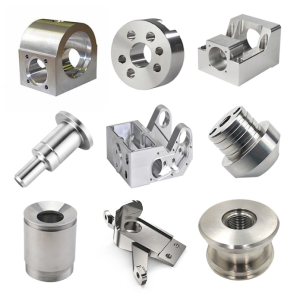Introduction to Steel: A Versatile Material
Steel is an essential material in various industries, from construction to cookware. Known for its strength and versatility, steel has a wide range of applications and is produced in different types. This guide explores steel’s characteristics, types, and uses, providing valuable insights for both professionals and enthusiasts.
What Exactly is Steel?
Steel is an alloy of iron and carbon, with carbon content typically up to 2%. It also contains trace amounts of other elements such as manganese, chromium, and nickel. These alloys affect steel’s properties, making it highly adaptable for different uses. Steel can last up to 100 years, retaining its strength without swelling or distortion.

Steel’s Strength and Durability
Steel is renowned for its ability to withstand high loads and tension, making it a preferred material for a wide array of applications. It is particularly favored in manufacturing due to its strength and long-lasting properties. Though its origins date back to 400 BCE in India, modern steel has evolved into a highly durable material used in diverse industries.
Steel’s Workability and Recyclability
Most types of steel are machinable and can be easily welded, though some require specialized processes. Compared to other metals, steel has low thermal and electrical conductivity, making it useful for heat shielding. Additionally, steel is highly recyclable, with over 60% of global steel production being reused. The process of making steel involves smelting iron ore using either a blast furnace or an electric arc furnace, followed by casting, rolling, and shaping.
Advantages and Challenges of Steel
While steel is an ideal material for many applications, it is heavier than alternatives like plastics and can corrode more easily if not properly treated. It is also more expensive, particularly specialty steels with specific treatments or alloy compositions.
Common Applications of Steel
Steel is used in an array of industries, from construction to medical equipment. Examples of steel products include bridges, automobiles, ships, surgical instruments, and even sports equipment. Its versatility makes it indispensable across multiple sectors.
Steel Properties: Strength, Ductility, and Corrosion Resistance
Steel’s properties, such as strength, ductility, and corrosion resistance, determine its suitability for various applications. High-strength steels are used in structural beams, while more ductile steels are ideal for forming ship hulls. Corrosion-resistant steels, like stainless steel, are used in environments exposed to acids and moisture.
Table 1: Steel Properties and Their Applications
| Property | Description | Examples of Steels | Advantages | Applications |
|---|---|---|---|---|
| Strength | Withstands high loads | High-strength low-alloy (HSLA) | Excellent structural strength | Structural beams |
| Ductility | Flexibility and formability | HD50 (High Ductility) | Easily shaped | Ship hulls |
| Corrosion Resistance | Resistance to environmental corrosion | Stainless steels (304, 316) | Resistant to acids and moisture | Food processing, medical implants |
Steel’s Physical Properties: Hardness, Tensile Strength, and More
Steel’s physical properties, such as hardness and tensile strength, vary depending on the type of steel and its alloy composition. The following table summarizes these key properties:
Table 2: Steel Physical Properties
| Property | Description | Examples of Steels | Typical Value Range | Units |
|---|---|---|---|---|
| Hardness | Resistance to surface deformation | Tool steel (D2) | 200 – 1180 | Brinell hardness (kg/mm²) |
| Tensile Strength | Ability to withstand stretching loads | Chromium vanadium steel (6150) | 250 – 600 | MPa |
| Thermal Conductivity | Transmission of heat | Carbon steel (grade C1010) | 15 – 45 | W/(m•K) |
Understanding the Chemical Properties of Steel
Steel’s chemical properties, including corrosion resistance, oxidation, and magnetic characteristics, vary by type. Stainless steels, for instance, have excellent corrosion resistance, while tool steels are more reactive. The table below compares various steel types based on their chemical properties.
Table 3: Chemical Properties of Steel
| Steel Type | Corrosion Resistance | Oxidation | Reactivity | Magnetic Properties | Stability |
|---|---|---|---|---|---|
| Carbon Steel | Limited | Significant | Reactive | Magnetic | Good |
| Tool Steel | Good | Significant | Reactive | Magnetic | Good |
| Austenitic Stainless Steel (304, 316) | Excellent | Minimal | Non-reactive | Non-magnetic | Excellent |
| Martensitic Stainless Steel (410, 420) | Excellent | Minimal | Non-reactive | Magnetic | Excellent |
Exploring Different Types of Steel
Steel comes in various grades, each tailored to specific applications. These types are distinguished by the types of alloys they contain and the processing methods used to produce them.
1. Stainless Steel
Known for its corrosion and temperature resistance, stainless steel is commonly used in food processing and medical equipment. It typically contains chromium and sometimes nickel.
2. Carbon Steel
Carbon steel is one of the most basic steel alloys, divided into high, medium, and low-carbon categories. The carbon content influences its strength, weldability, and ductility. It is widely used in construction, automotive, and spring manufacturing.
3. Alloy Steel
Alloy steel contains additional elements like chromium, nickel, and molybdenum, which enhance its properties. These alloys are further classified into low-alloy and high-alloy steels.
4. Tool Steel
Tool steel is designed for making tools and machinery parts. It is characterized by high carbon content and is heat-treated for increased strength and durability.
5. Weathering Steel
Weathering steel is designed for outdoor use, forming a protective oxide layer to resist corrosion. It is often used in outdoor structures like bridges and sculptures.
6. Electrical Steel
Used in electrical applications such as transformers and motors, electrical steel contains 2-3.5% silicon, improving its efficiency in electromagnetic applications.
7. High-Speed Steel
Made for tools that operate at high speeds, high-speed steel is enhanced with tungsten and molybdenum and is heat-treated for toughness.
Conclusion: The Many Faces of Steel
Steel’s adaptability and strength make it an indispensable material in countless industries. Whether you’re working with construction materials, medical devices, or advanced machinery, understanding the properties and types of steel can help you choose the right material for your needs.


